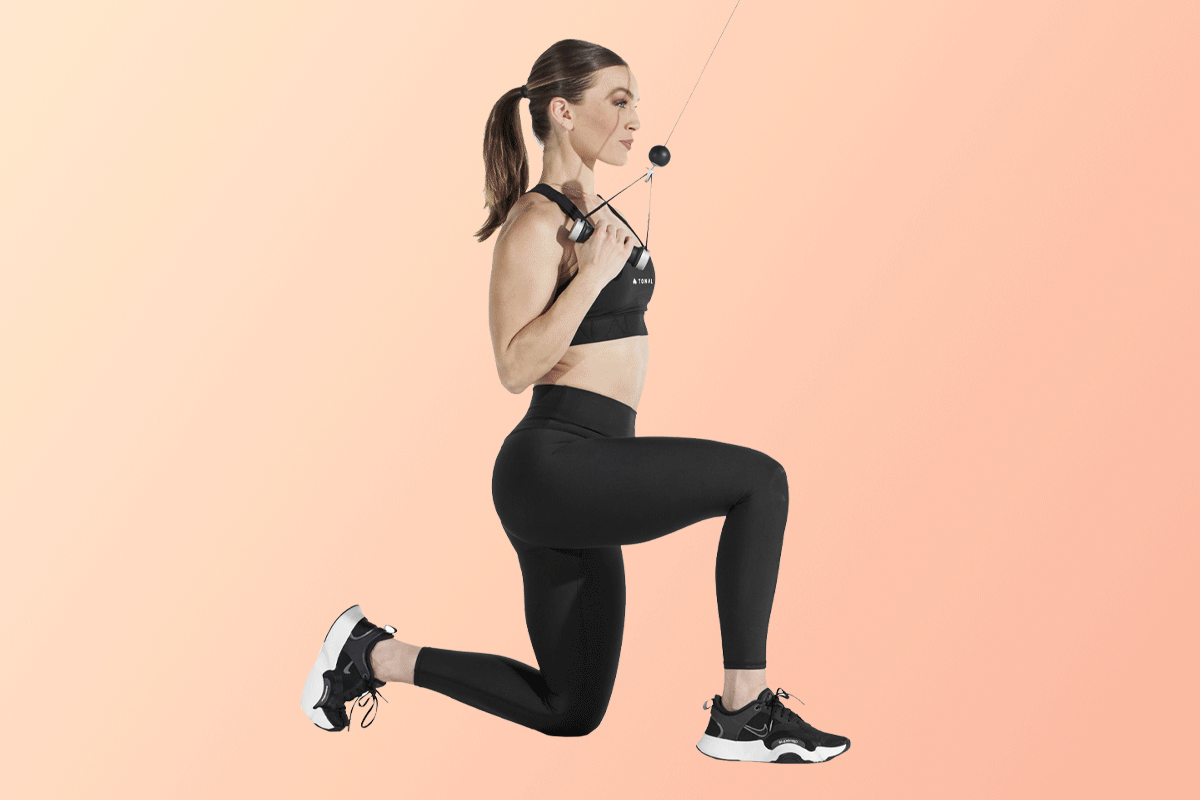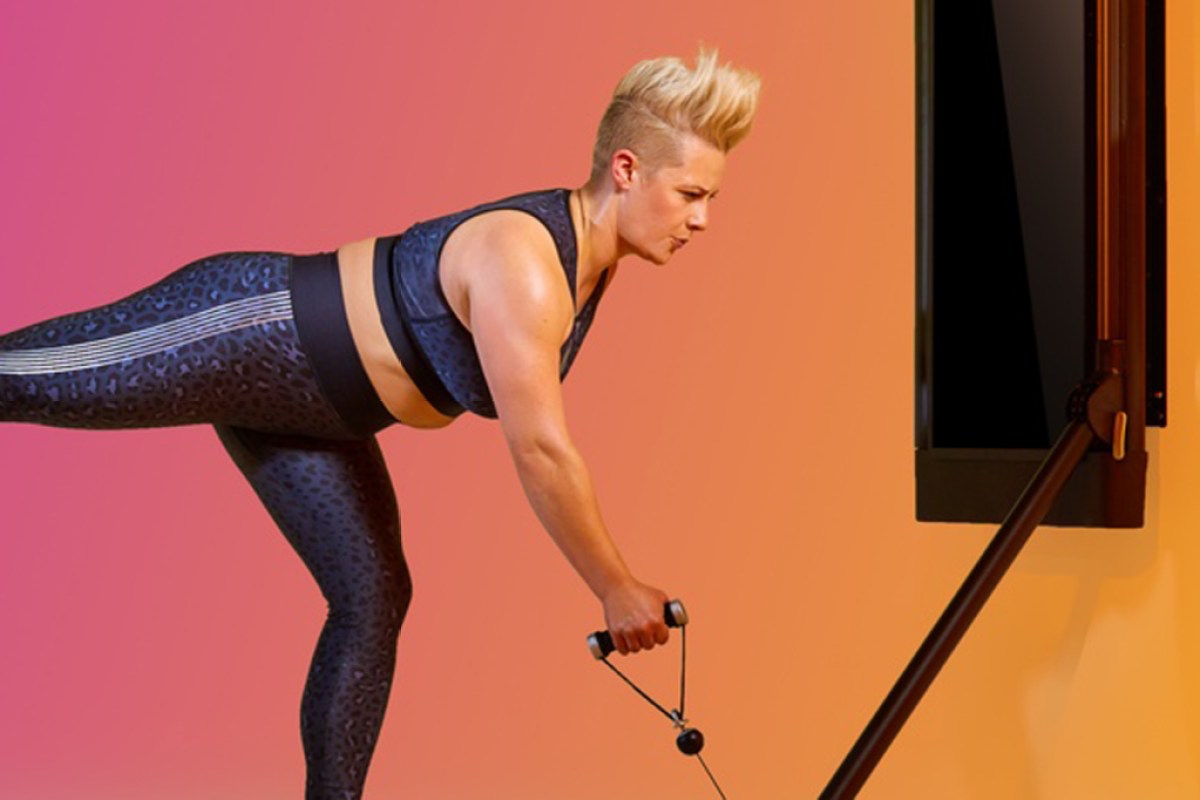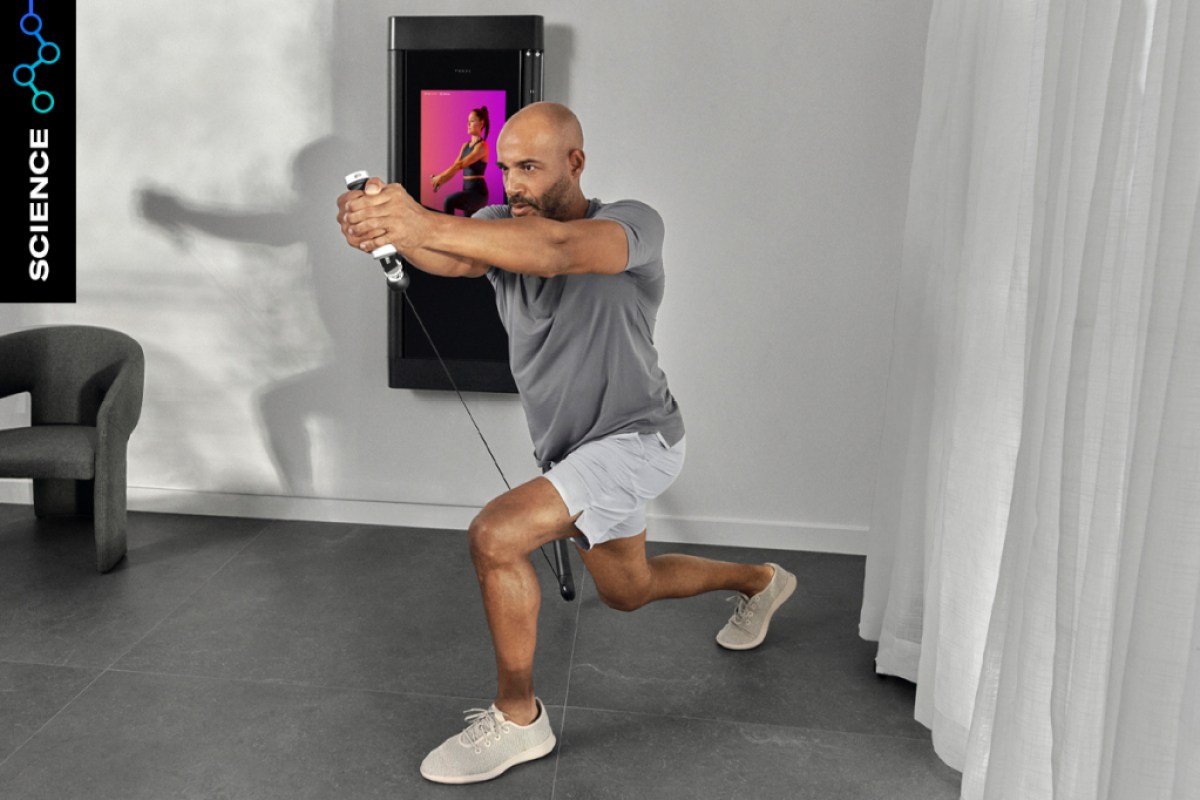Working out might be the last thing on your mind as a new mom, but your postpartum exercise might become the favorite part of your day.

As a new mom, you might feel selfish for taking “me time” away from your baby to exercise, but taking care of yourself is actually the best thing you can do for those you love.
For Coach Amy Kiser Schemper, movement was a big factor in healing from postpartum anxiety and depression. “It helped me feel like myself again. As moms, our bodies often feel like they aren’t our own: We go through pregnancies, deliveries, breastfeeding, and caring for others,” she says. “Exercise helps us heal both physically and emotionally and gives us time to reconnect with our own bodies.”
Here, experts share their best advice for how to navigate postnatal exercise.
Recovery Comes First
The weeks and months that follow your baby’s arrival are the perfect time to give yourself some grace. “Throw all your expectations out the window,” says Michelle Grabau, Fitness Programming Director at Tonal and mom of a one-year-old. After all, you carried a baby for months, went through labor and delivery, and now take care of a new human. “This is not a time to be hard on your body after going through so many major changes,” she says. “Movement should add to your life during this time, not cause more stress, so take it slow.”

Since many women don’t get a traditional recovery period as you might with an injury or illness, Schemper recommends taking proper precautions when getting back to postpartum exercise. Be sure to work closely with your doctor before starting or restarting any exercise program and check out the Postnatal Modifications video on Tonal to understand how to safely modify exercises.
“Try to avoid thinking of workouts as a way to ‘lose the baby weight’ or ‘get your body back’ and think of it as a way to reconnect with your body, regain strength and function, boost your energy and endorphins and just feel your best,” notes Schemper.

When you’re first starting to get back to movement, focus on easy movement and reconnecting to your core. Walking is a great entry back into postpartum exercise, and you can get out and about with the stroller, says Coach Amy. “We need the blood circulation, and it gets us out of the common movement patterns of new mom life that can take a toll on our bodies like holding, rocking, feeding, and carrying your baby.”
As soon as you feel ready, you can start with transverse abdominis (TA) breathing and pelvic floor activation (PFA). “Our core muscles go through the most trauma during pregnancy and delivery,” notes Schemper. “Reconnecting with your deep core and pelvic floor, and restoring function is key to everything we do.”

Your TA muscle is the deepest layer of core muscles and acts like a corset around your midsection. During pregnancy, we often get into “backward breathing” patterns, explains Schemper, where we inhale up (think shoulders raising) and exhale down, which puts pressure on the core and down on the pelvic floor. TA breathing, along with PFA, will help you re-strengthen and connect to the muscles that have been through the most in your postpartum exercise routine.
How to perform TA breathing:
- Take a big inhale to expand through your belly, sides, and back, 360 degrees around, while relaxing your pelvic floor muscles.
- As you exhale, gently pull the TA muscles in and up, being careful not to suck in. Think about tilting the hips up toward the ribs, while also bringing your navel to your spine.
- Add PFA to this by contracting in your pelvic floor muscles, like a kegel, but without squeezing the glute muscles. Imagine you are lifting a blueberry or sipping through a straw with your pelvis connecting from the four points of your pubic bone, tailbone, and sit bones.
- Take it slow and perform both some single repetitions as well as 5- to 10-second holds with your TA breathing/PFA.
- TA breathing takes practice. Schemper recommends trying to get TA/PFA several times throughout your day, for just a few reps as you reestablish function and strength.

Once cleared for postpartum exercise, you can begin to progress to bodyweight strength and low-impact cardio. “Often, women go right to high-impact cardio like running or core workouts like crunches and planks, but these exercises can do more harm than good if your body isn’t ready,” says Schemper. “We want to rebuild the core from the inside out, learn to manage pressure in the abdomen and engage the core properly for exercise as well as everyday activities.”

Practicing bodyweight exercises can help you relearn movement patterns after your pelvis and posture changed during pregnancy and your joints have become more flexible. Tonal offers guided postnatal workouts like “Early Postnatal Core” and “Postnatal Cardio” workouts to choose from. “All will focus on recovery, strength, and function, as well as core reconnection, but while working in strength, cardio and mobility,” says Schemper.
For these first strength workouts back, Grabau notes, “The rep ranges are fairly high so that the weight stays low before gradually getting heavier into those lower rep ranges, and sneaking core into everything that you’re doing.”
The “Naptime Series” of workouts are perfect when you’re short on time: full body, quick and appropriate for postpartum, pregnancy, or any stage of motherhood. These workouts provide options depending on where you are in your postpartum recovery so you can scale down or up at any time, but all are specific to training your postnatal body, and prepare you to get back to doing what you love.
When you feel ready to start adding more strength training to your routine, check out this curated collection of exercises to address your postpartum exercise needs.

Depending on how you’re feeling at this point, you may be ready to progress gradually into (or back into) some higher-intensity cardio or strength workouts. You can get into the swing of a routine on Tonal by first using the Recovery Weight feature before progressing to full-weight. The postnatal workouts mentioned above act as a great complement to your cardio and strength workouts during this time to maintain your core foundation.
Above all, be kind to yourself in the process and choose activities you enjoy. “We do so much as mothers, often on little sleep, so try to view exercise as a fun activity that adds value to you and your baby’s day,” Schemper advises.
The information provided in this article is for educational and informational purposes only. Individuals with pre-existing health conditions, injuries, or concerns should consult with their healthcare provider before trying a new exercise or nutrition regimen.


